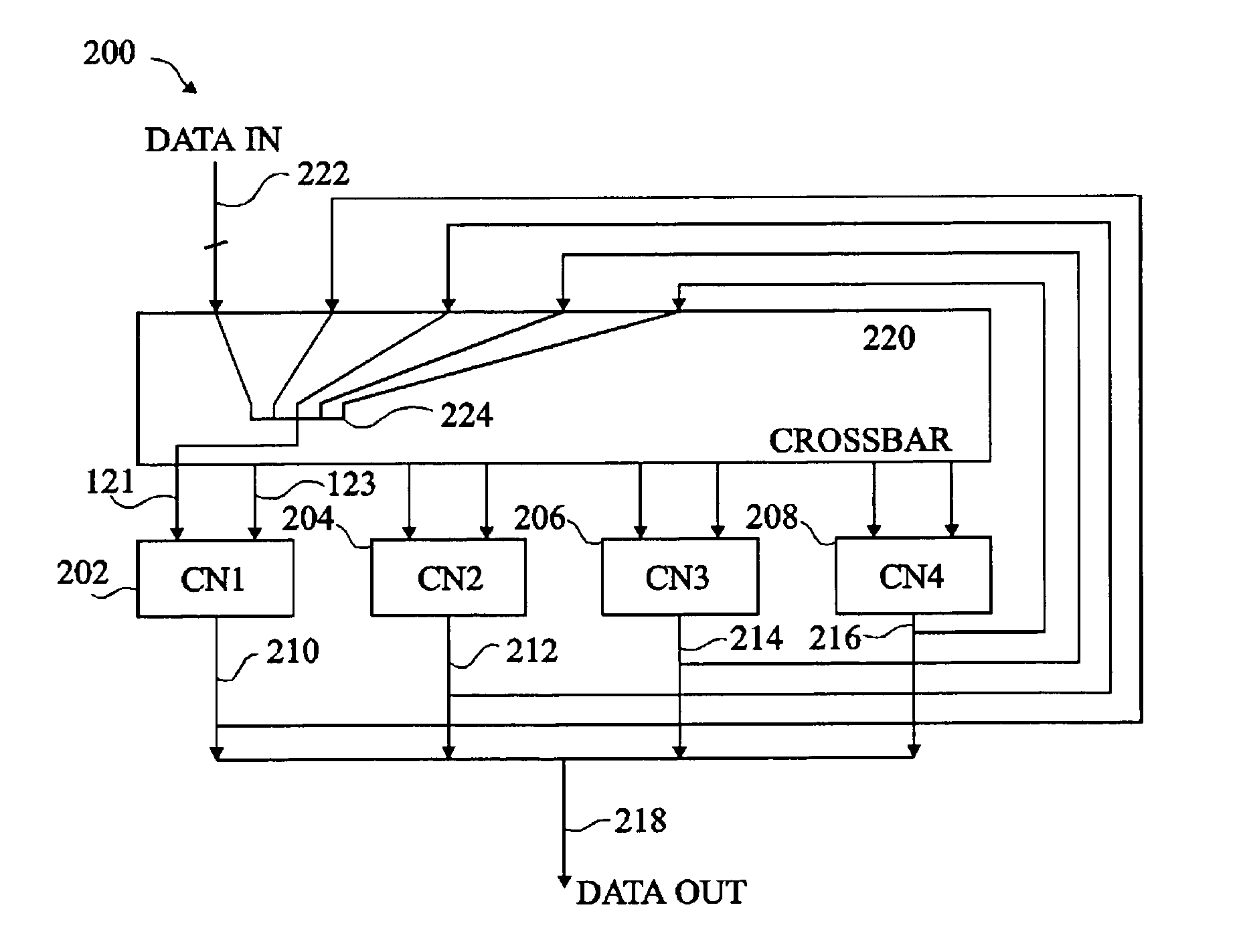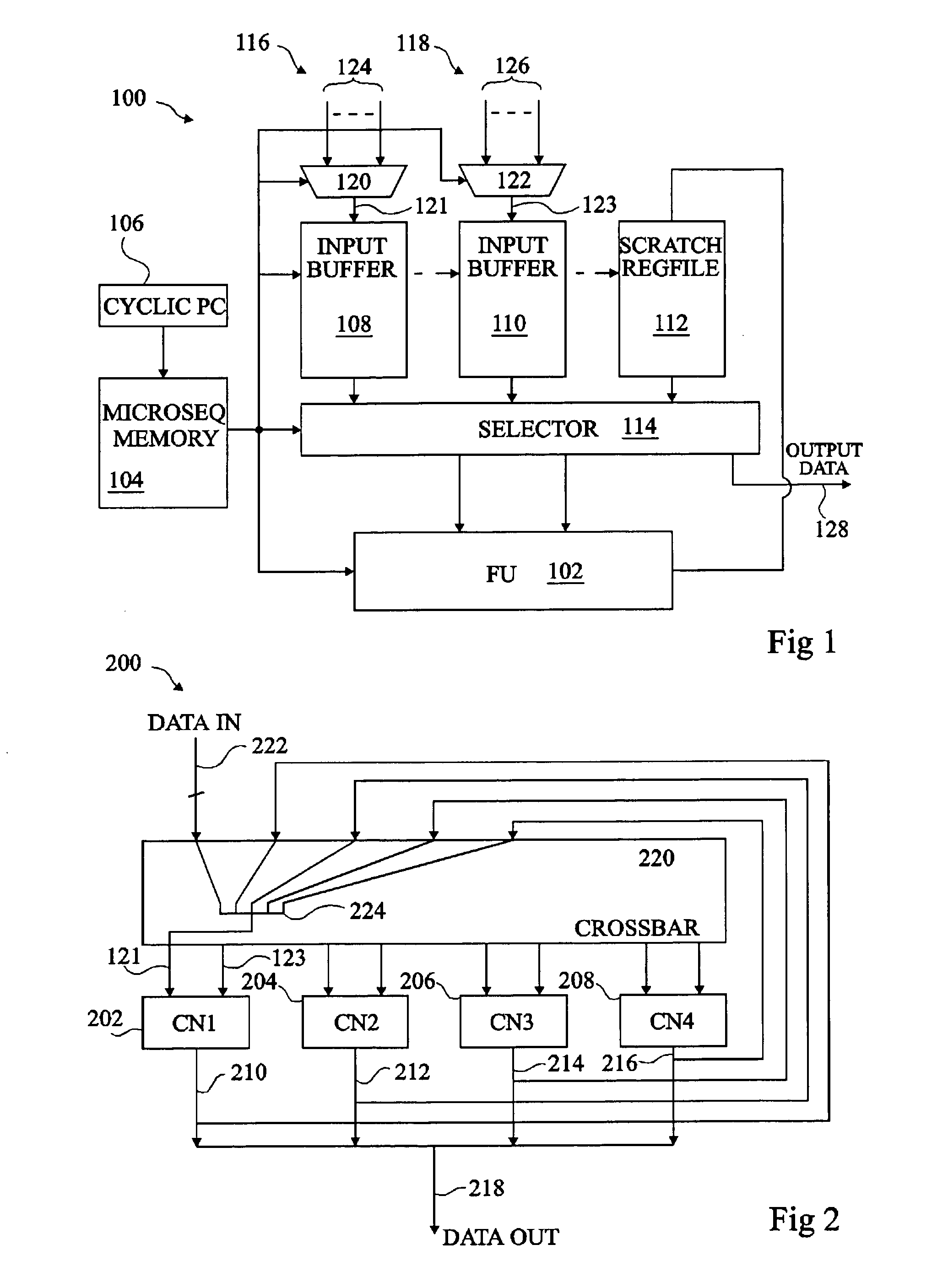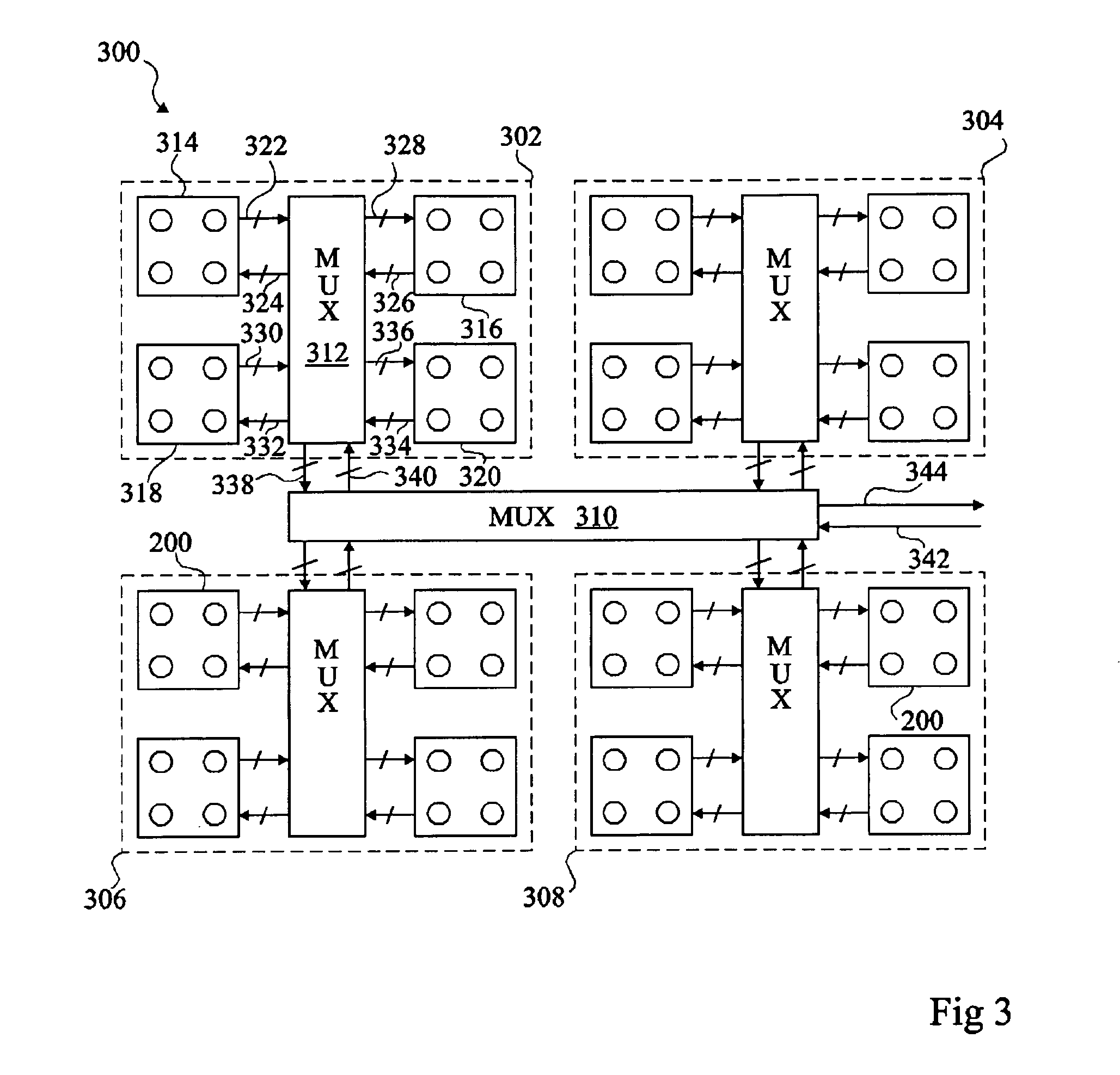Hierarchical Reconfigurable Computer Architecture
a computer architecture and hierarchy technology, applied in the field of computer architecture, can solve the problems of inability to meet the high processing power requirements of modern designs, the simd architecture having a central context memory is not suitable for irregular algorithms, and the scheduling of operations within the cells is difficult to control
- Summary
- Abstract
- Description
- Claims
- Application Information
AI Technical Summary
Benefits of technology
Problems solved by technology
Method used
Image
Examples
Embodiment Construction
[0032]FIG. 1 illustrates a computing node 100. CN 100 comprises a functional unit 102, which is for example an arithmetic logic unit (ALU), and is capable of performing an operation on one or more inputs and providing an output. The operation performed by the functional unit 102 is controlled by a microsequence memory 104 connected to the functional unit, which stores instructions to be executed sequentially. A cyclic program count (PC) 106 is connected to the microsequence memory. First and second input buffers 108 and 110 and a scratch register file 112 provide inputs to the functional unit 102. Input buffers 108 and 110 each store for example 16 bits of data (one word), whilst the scratch register file 112 stores for example 64 bits of data (four words). The output of a functional unit is connected to the scratch register file 112, such that the output of the functional unit 102 maybe selected for input to the functional unit 102 on a subsequent cycle. The output of each input bu...
PUM
 Login to View More
Login to View More Abstract
Description
Claims
Application Information
 Login to View More
Login to View More - R&D
- Intellectual Property
- Life Sciences
- Materials
- Tech Scout
- Unparalleled Data Quality
- Higher Quality Content
- 60% Fewer Hallucinations
Browse by: Latest US Patents, China's latest patents, Technical Efficacy Thesaurus, Application Domain, Technology Topic, Popular Technical Reports.
© 2025 PatSnap. All rights reserved.Legal|Privacy policy|Modern Slavery Act Transparency Statement|Sitemap|About US| Contact US: help@patsnap.com



